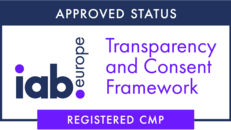What We’re Saying When We Say Automated Data Mapping
Because modern privacy is still young, the world doesn’t yet have a shared understanding of every term in privacy compliance. To help bring us to that shared understanding, here’s our primer on what we mean when we say “automated data mapping.”
Because modern privacy is still young, the world doesn’t yet have a shared understanding of every term in privacy compliance. To help bring us to that shared understanding, here’s our primer on what we mean when we say “automated data mapping.”
Defining Automated Data Mapping
Automated data mapping is about more than just one visual snapshot of your data flows. It’s about how you get to that visual map and what you do once you have it. To create a data map, you need a platform that can efficiently inventory diverse data formats across your tech stack. And once you have your data map, you need a platform that can make sense of the data and deliver the reports needed to meet privacy compliance.
Automation is key to both creating a data map and making sense of the map once it is built. When we talk about automated data mapping, we are talking about automated data management and inventory tools that build on the basic legal information you provide. The result is an automated platform does the heavy lifting for you, giving your team and users a seamless experience when users exercise their data rights.
Regardless of your background, we’ll walk you through the role of automation in data mapping.
Making Sense of Schemas
Put simply, a schema is a complete layout of a database: what it stores and how it stores that information. When you add a SaaS app to your company’s tech stack, you want to know what kind of personal information the app gathers. Having already analyzed this app’s schema, an automated tool pre-fills the types of information likely to reside in this app’s systems. This brings a huge time savings to your team, who’d otherwise need to contact the app’s engineers to gather this insight.
Harmonizing Data Structures
Sometimes, the same piece of information is stored in different formats or data structures. For instance, one app might store each customer’s name in one string of characters, like “John Smith.” Meanwhile, another app stores first and last names in separate strings: one for “John” and another for “Smith.”
When John Smith, a hypothetical California resident, asks to access all personal data you have on him, you might only see some of his data when conducting a basic search for “John Smith” in your systems. This one oversight can cost you hundreds in CCPA fines, not to mention the cost in users’ trust.
Automated data mapping detects and reconciles different data structures to deliver an accurate view of your systems.
Updating Systems Automatically
Suppose John Smith requests that you delete all of the information you hold about him. It’s on your company to enforce that deletion across every part of your company’s data flow, including third parties’ systems. Here’s where automation does the heavy lifting. An automated data mapping tool connects disparate databases to seamlessly enforce such a request.
Generating Useful Reports
With Ethyca, a data map distills your company’s complex data flows into a clear visual. You also receive an automatic and downloadable report that meets GDPR requirements for a Record of Processing Activities (RoPA). This report simplifies internal and external review while remaining ready to adapt to changes in your tech stack. Below is a simple example of what you’d expect to find in a RoPA. Ethyca’s is considerably more robust!
Seeing Data Mapping in Action
More than a static visual, a data map is an evolving project to account for all data in your systems. Now that you understand data mapping, you probably want to see it in action. Drop us a line, and we’ll gladly show you what data mapping can bring to your business.
Engineering Data Trust at Scale: A Conversation with Adrian Galvan, Senior Software Engineer
Read MoreAdrian Galvan builds scalable, privacy-first integrations at Ethyca.
From Paper to Power: Reflections on the 2025 Consero CPO Summit
Read MoreAt the Consero CPO Summit, it was clear: privacy leaders are shifting from compliance enforcers to strategic enablers of growth and AI readiness.
JustPark Chooses Ethyca to Power Global Privacy and Data Governance
Read MoreJustPark has selected Ethyca to power its privacy and data governance, enabling trusted, consent-driven data control as the company scales globally.
Closing the AI Accountability Gap: Solving Governance with Data Infrastructure
Read MoreWithout infrastructure to enforce it, AI governance becomes costly theater destined to fail at scale.
The Engineer’s Burden: Why Trustworthy AI Starts with the Data Layer
Read MoreTrustworthy AI begins with engineers ensuring clean, governed data at the source.
Google Tag Manager Is Now a Legal Risk: German Court Ruling Redefines the Consent Perimeter
Read MoreKey takeaways from a German court ruling that redefines consent requirements for using Google Tag Manager.
Ready to get started?
Our team of data privacy devotees would love to show you how Ethyca helps engineers deploy CCPA, GDPR, and LGPD privacy compliance deep into business systems. Let’s chat!
Speak with UsSign up to our Newsletter
Stay informed with the latest in privacy compliance. Get expert insights, updates on evolving regulations, and tips on automating data protection with Ethyca’s trusted solutions.


